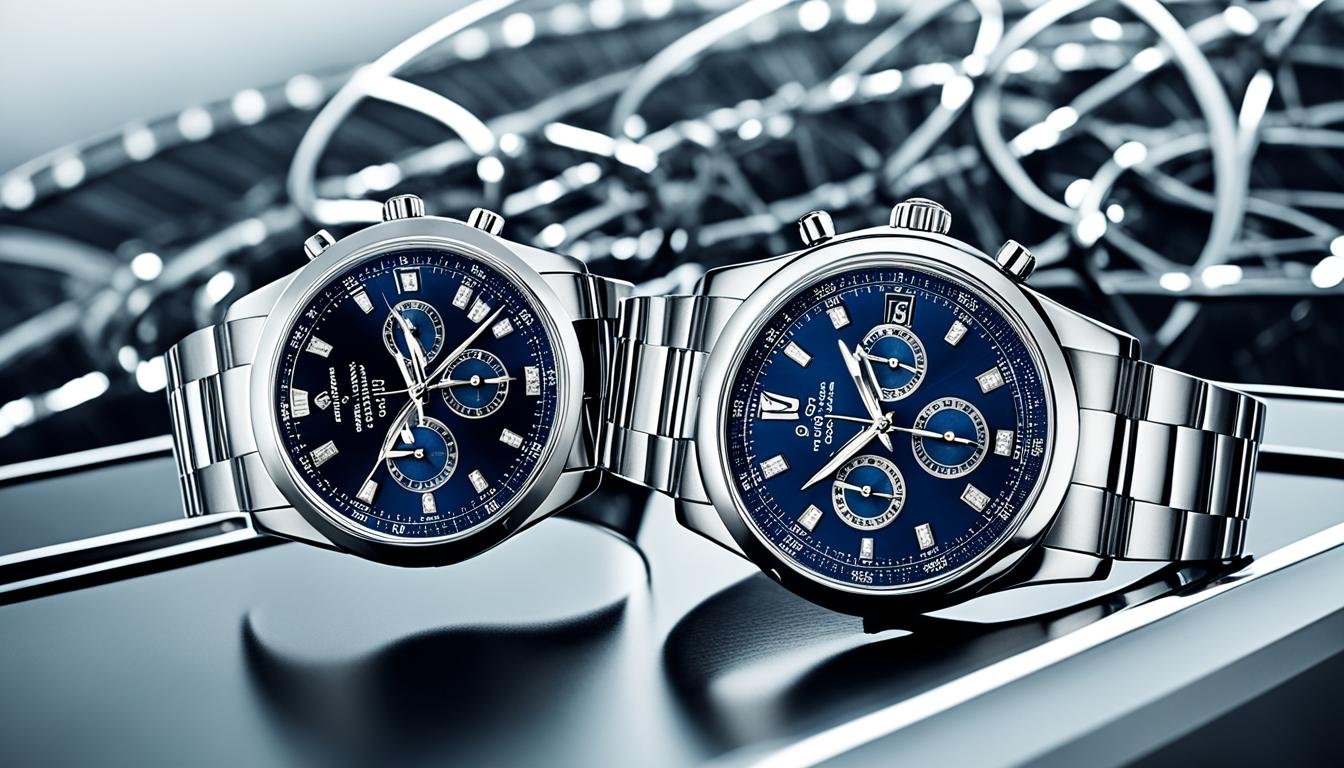Did you know that the global dress code market is projected to reach $1.37 trillion by 2028? This staggering figure highlights the growing importance of appropriate attire for various social and professional occasions. Dress codes have become more widespread, serving as a crucial part of our personal and working lives.
These social norms dictate how individuals should dress for a particular party, conference, or meeting. The rules are not always written down, but they often depend on the host’s style and the event’s formality. In fact, the invitation itself may specify the dress code that all guests are expected to follow.
Dressing well is a form of respect, acknowledging the significance of the event and the host. Additionally, it can help guests feel more comfortable and enjoy the social occasion. Understanding the nuances of different dress codes is essential for navigating the ever-evolving landscape of event dressing, wardrobe advice, and style recommendations.
### Key Takeaways
– The global dress code market is projected to reach $1.37 trillion by 2028.
– Dress codes are social norms that dictate how individuals should dress for a particular event.
– Dress codes are often specified in the event invitation or depend on the host’s style and the event’s formality.
– Dressing appropriately shows respect for the event and the host, and can help guests feel more comfortable and enjoy the occasion.
– Understanding different dress codes is crucial for navigating the ever-evolving landscape of event dressing, wardrobe advice, and style recommendations.
Understanding Dress Codes
Dress codes play a crucial role in many social and professional settings, serving as a set of guidelines that help guests dress appropriately for the occasion. Understanding the concept of a dress code and why they matter can ensure a more enjoyable and respectful experience for both the host and the attendees.
What is a Dress Code?
A dress code can be defined as a series of social norms that dictate the expected attire for a particular event, party, conference, or meeting. These unwritten rules are often influenced by the host’s preferences, the formality of the occasion, and prevailing cultural customs. While the specific requirements may vary, dress codes aim to create a cohesive and visually appealing atmosphere for the gathering.
Why Dress Codes Matter
Adhering to the appropriate dress code demonstrates respect for the host, the event, and the other guests. Dressing well shows that the occasion and the host’s preferences are important to the attendee. Additionally, dressing in accordance with the dress code can help guests feel more comfortable and confident, allowing them to fully engage in the social or professional event.
Furthermore, the event dressing and wardrobe choices can have a significant impact on the overall experience. Appropriate attire can enhance the sense of camaraderie, professionalism, and enjoyment for everyone involved. Conversely, disregarding the dress code may result in feeling out of place or distracting from the intended atmosphere.
In many cases, the event planning and invitations will clearly communicate the expected style recommendations for the occasion, whether it’s formal attire, casual wear, or something in between. Paying attention to these cues can help guests make informed decisions about their wardrobe advice and ensure they are dressing for the event in a manner that is respectful and fitting.
Event Dressing: Decoding Common Dress Codes
When attending various social and corporate events, it’s crucial to understand the appropriate and required. From formal to casual , the
White Tie
White tie is the most formal of all dress codes. It typically calls for a black tailcoat, a white starched shirt with a wing-collar, a white bow tie, and black dress shoes. This level of is reserved for the most prestigious occasions, such as state dinners or high-society balls.
Black Tie
Black tie is a semi-formal code that requires a tuxedo, a black bow tie, and formal black shoes. While not as formal as white tie, it still maintains a level of
Cocktail Attire
Cocktail is a step down from black tie, striking a balance between and . This dress code typically calls for a suit and tie for men, and a cocktail dress or dressy separates for women. Cocktail attire is common for events like business dinners, holiday parties, or upscale social gatherings.
Semi-Formal
Semi-formal is a versatile dress code that allows for a bit more flexibility. For men, it might mean a suit without a tie, or a sport coat and dress pants. For women, a cocktail dress, dressy skirt and blouse, or a jumpsuit could be appropriate. This
Dressy Casual
Dressy casual is a step down from semi-formal, but still requires a more polished look than everyday . This could include dark wash jeans paired with a button-down shirt and dress shoes for men, or a sundress or nice top and slacks for women. Dressy casual is common for more relaxed social gatherings, such as backyard parties or informal work functions.
Casual
Casual is the most relaxed of all dress codes, allowing guests to wear their everyday attire. This might include t-shirts, jeans, and sneakers. Casual dress is often the norm for informal events, such as picnics, movie nights, or backyard barbecues.
Interpreting Unclear Dress Codes
When the dress code for an event is not explicitly stated or appears ambiguous, there are a few helpful clues to decipher the appropriate attire. The event dressing and wardrobe advice can be gleaned from various aspects of the invitation and event details.
Clues from the Invitation
Carefully examine the invitation for any subtle hints about the expected event planning and style recommendations. The wording, design, and formality of the invitation can provide valuable insights into the desired level of formal attire or casual wear.
Timing and Venue
The timing and location of the event can also offer cues about the appropriate dress code. A daytime event in a more casual setting may call for dressy casual attire, while an evening affair at a upscale venue may warrant a more formal attire approach.
Asking the Host
If you’re still unsure about the expected event dressing and style recommendations, don’t hesitate to politely inquire with the host or organizer. They will be able to provide clear guidance on the desired event planning and formal attire or casual wear for the occasion.
Dressing for Corporate Events
When it comes to event dressing in a professional context, the dress code is of utmost importance. Corporate events, whether they are conferences, business dinners, or client meetings, require a level of formality and style that sets the tone for the occasion. The aesthetics of one’s attire can convey respect, professionalism, and a sense of belonging to the organization.
Business or Formal Dress Code
For events with a formal dress code, the expectation is that attendees will don tailored suits, collared shirts, and polished dress shoes. This level of sartorial elegance is often required for important business meetings, industry galas, or high-level client engagements. Adhering to this formal attire demonstrates a commitment to the event planning and shows respect for the style recommendations of the hosts.
Smart Casual
In contrast, some corporate events may have a more relaxed dress code, such as “smart casual.” This casual wear option allows for a bit more flexibility in wardrobe choices, while still maintaining a polished and professional appearance. Slacks, button-down shirts, and dress shoes are often acceptable, providing a balance between comfort and formality that is suitable for less formal event dressing scenarios.
Regardless of the specific dress code, it is essential to consider the wardrobe advice provided and dress accordingly to ensure a seamless event planning experience and demonstrate style recommendations that align with the corporate culture.
Style Tips for Social Occasions
When attending social events, looking polished and put-together is key. Good grooming and wardrobe care are essential for making a great first impression and feeling confident throughout the occasion. Here are some top tips to keep in mind:
Grooming and Wardrobe Care
Start by keeping your clothing well-pressed and free of wrinkles. Ensure your shoes are shined and in good repair. Pay close attention to your hair and nails, making sure they are neatly groomed. These small details can elevate your overall formal attire or casual wear and help you look crisp and polished.
Accessorizing
Thoughtful accessorizing can really pull an event dressing look together. Consider adding a sharp-looking watch, a pocket square, or a stylish belt to complement your outfit. When it comes to wardrobe advice for event planning, accessories are a great way to add a touch of personality and style recommendations to your formal attire or casual wear.
Conclusion
Dress codes are an essential consideration for many social and professional events, helping guests show respect for the occasion and host, as well as feel confident and comfortable. By understanding the common dress code categories and being prepared to interpret unclear guidelines, individuals can ensure they make the right sartorial choices for any event they attend.
Adhering to the appropriate event dressing not only demonstrates consideration for the host, but also allows guests to fully immerse themselves in the social occasion without worrying about their attire. With a proactive approach to wardrobe advice and event planning, individuals can navigate the nuances of dress codes and showcase their personal style recommendations in a manner that is respectful and befitting of the event, whether it is a formal black tie affair or a more casual gathering.
By staying mindful of the formal attire and casual wear guidelines, guests can ensure they make a positive impression and fully enjoy the social event or professional function they are attending. With a little preparation and attention to detail, individuals can confidently navigate the world of event dressing and create lasting memories through their impeccable sartorial choices.
FAQ
What is a dress code?
Dress codes are a series of social norms which oblige the person to dress in a particular way, for a party, conference or meeting which may be part of our working or social life.
Why do dress codes matter?
Dressing well is a form of respect, as it acknowledges to the host that the event and they matter to the guest. Additionally, dressing appropriately can help the guest have more fun and enjoy the social occasion.
What are some common dress code categories?
Some of the most frequent dress code categories include White Tie, Black Tie, Cocktail Attire, Semi-Formal, Dressy Casual, and Casual.
How can I interpret an unclear dress code?
Look for clues from the invitation, the timing and venue of the event, and consider asking the host for more guidance on the appropriate attire.
What should I keep in mind for dressing for corporate events?
For corporate events, the dress code is often Business or Formal Dress, or Smart Casual. It’s important to look polished and professional.
Any tips for looking my best at social events?
Good grooming and wardrobe care are essential, including keeping clothing well-pressed, shoes shined, and hair and nails groomed.





































